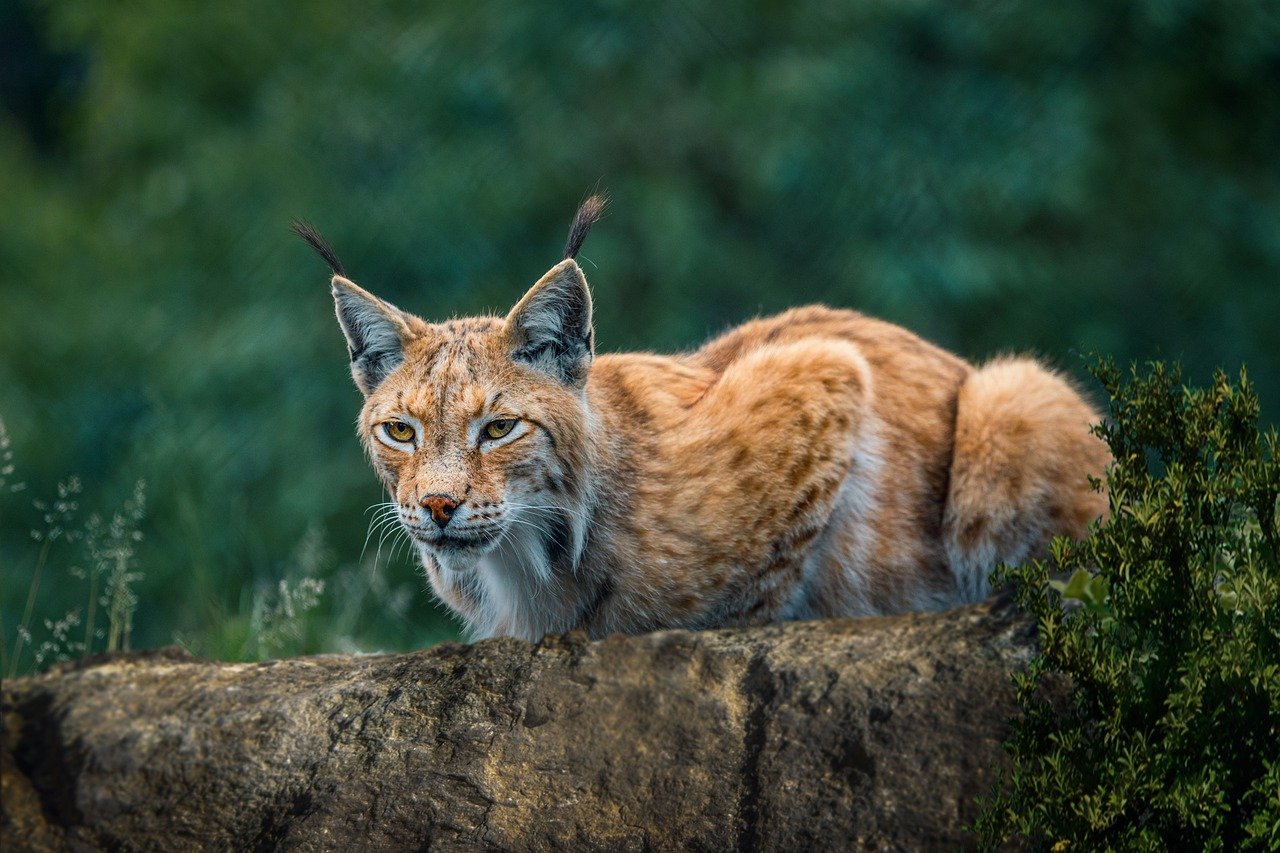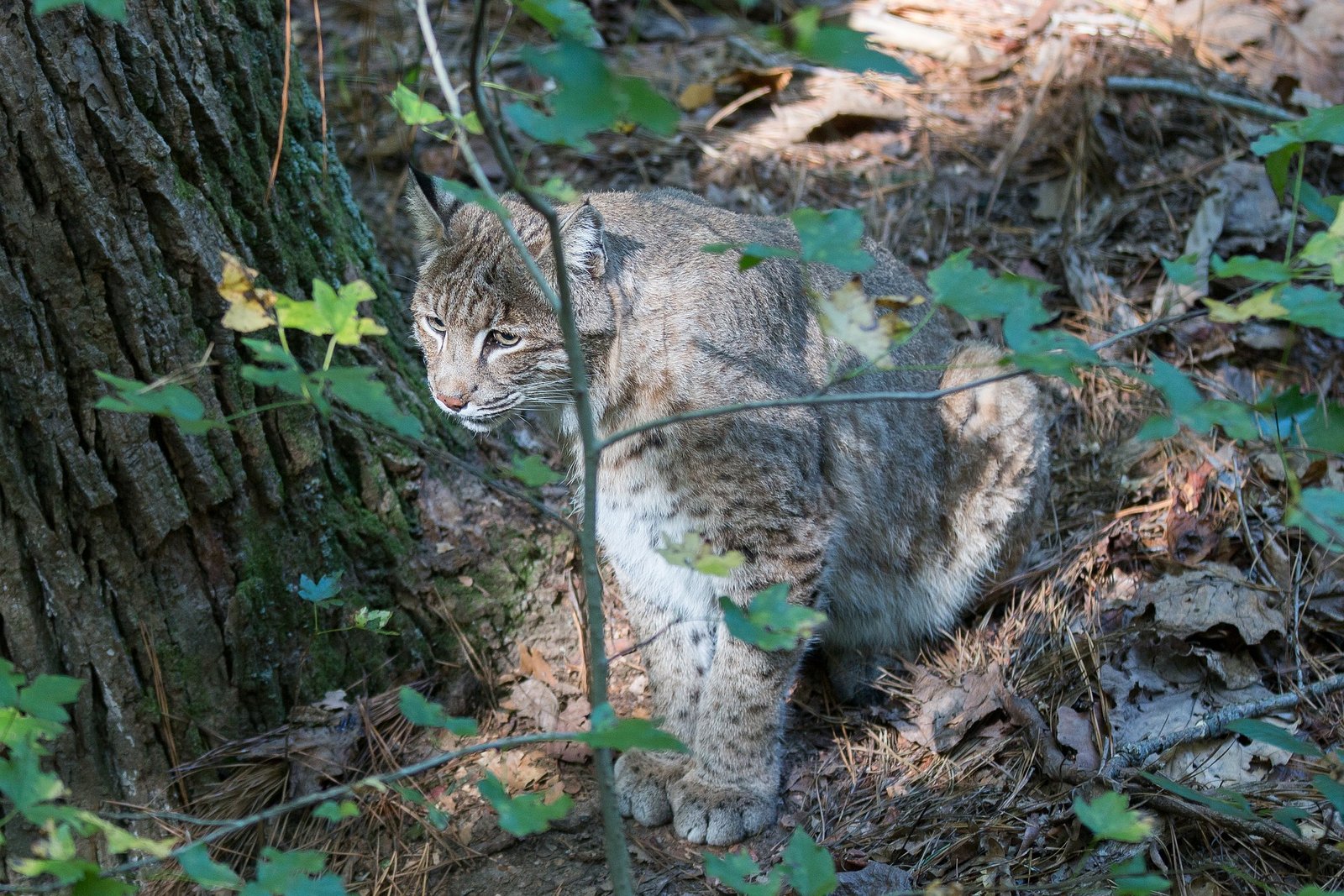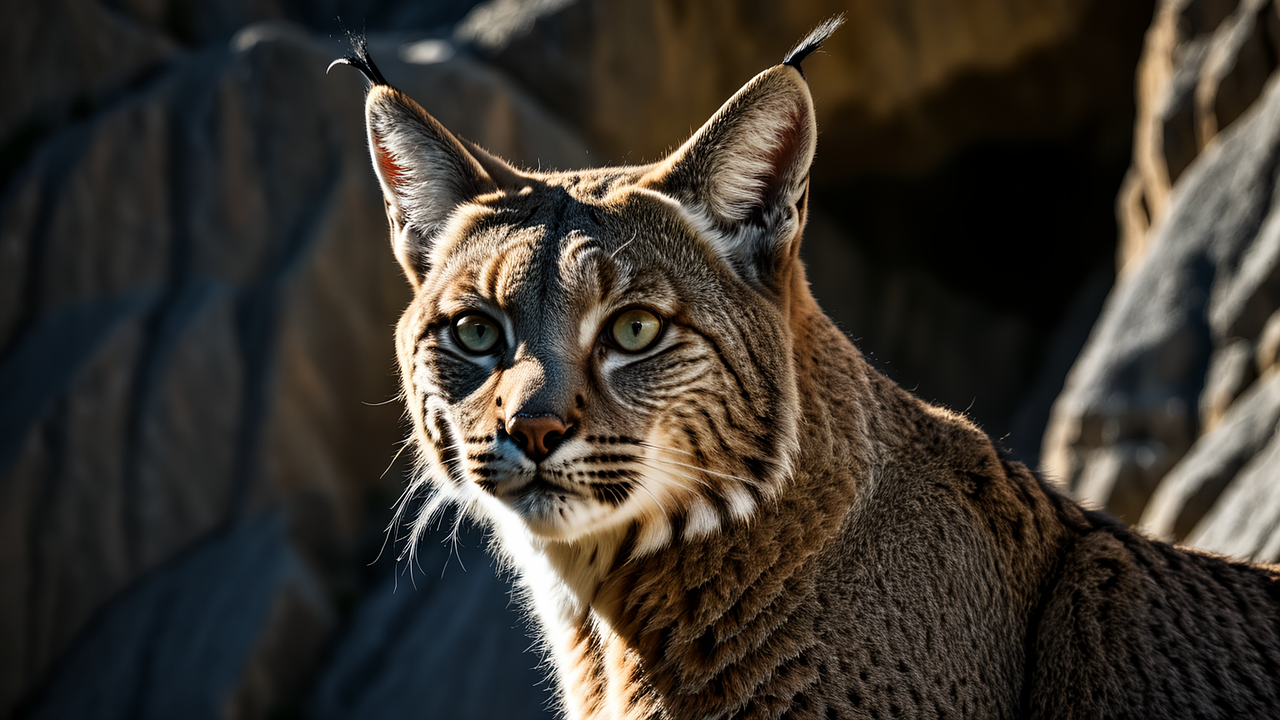Have you ever seen a bobcat in the wild? At first glance, these medium-sized felines might look like overgrown house cats with their cute faces, tufted ears, and fluffy tails. But don’t be fooled by their charming appearance! Bobcats are actually fierce little powerhouses, hiding razor-sharp instincts and surprising abilities behind their soft fur. If you think these wild cats are harmless, get ready to have your mind changed—maybe even blown. Here are eight shocking reasons why bobcats are much more dangerous than they look.
They’re Silent Stalkers
Bobcats have a remarkable ability to move quietly, almost like ghosts in the forest. Their padded paws let them sneak up on prey without making a sound, which means their victims often don’t stand a chance. Imagine walking through the woods and not hearing a single twig snap—then, suddenly, a bobcat leaps out from nowhere! This stealthy behavior is part of what makes them such successful hunters. While we might picture big cats like lions as the ultimate predators, bobcats have mastered the art of silent stalking on a much smaller scale. This quiet approach helps them catch everything from rabbits to birds, and even the occasional deer. So, next time you’re hiking, remember: if you see a bobcat, chances are it saw you first.
Lightning-Fast Reflexes

Don’t let their cuddly appearance fool you—bobcats are quick as a flash. Their reflexes are so sharp that they can snatch a bird out of the air or grab a darting rabbit before it has a chance to escape. This speed makes them a real danger to any animal that crosses their path. Even humans have trouble keeping up with their sudden bursts of movement. If you ever see a bobcat leap, you’ll understand why they’re feared by so many smaller animals. Their ability to change direction in mid-air is almost like something out of an action movie. That’s why, despite their size, bobcats often come out on top in the wild.
Surprisingly Strong for Their Size

Bobcats might not be as big as mountain lions, but don’t underestimate their strength. With powerful muscles packed into their compact bodies, they can take down animals much larger than themselves. Imagine a house cat trying to take on a deer—it sounds impossible, but a bobcat can actually do it! Their jaws and claws are designed for gripping and holding onto prey, making escape almost impossible once they strike. And if they feel threatened, bobcats won’t hesitate to defend themselves fiercely. That strength, combined with their agility, makes them way more formidable than their size suggests.
Aggressive When Cornered
While bobcats usually try to avoid humans, they can be shockingly aggressive if they feel trapped or threatened. If a bobcat is cornered, it will hiss, growl, and even lunge with claws outstretched. There have been plenty of stories about people who got too close to a bobcat and were surprised by just how fierce these animals can be. Unlike some animals that freeze or run, a bobcat is more likely to fight its way out of trouble. This unpredictable aggression means you should always give them plenty of space—even if they look calm and curious.
Masters of Camouflage

One of the most dangerous things about bobcats is how easily they blend into their surroundings. Their spotted fur isn’t just for show—it helps them disappear among leaves, branches, and rocks. This camouflage gives them a huge advantage both as hunters and as animals avoiding danger. Sometimes, you could be standing just a few feet away from a bobcat and not even know it. This natural disguise makes them hard to spot and even harder to avoid, especially for animals that don’t have sharp eyes. In the wild, being invisible is a superpower, and bobcats use it to perfection.
They’re Expert Climbers and Swimmers

Many people don’t realize that bobcats are just as comfortable in trees and water as they are on land. They can climb trees with ease, using their strong claws to grip the bark and escape from predators—or sneak up on unsuspecting prey. If you think jumping into a pond will save you from a bobcat, think again! These clever cats can swim surprisingly well, making them a threat in almost any environment. Whether it’s scaling a tree to escape danger or chasing a meal through the water, bobcats are always ready for action. Their versatility in different landscapes makes them unpredictable and tough to avoid.
They Carry a Wild Streak

There’s no taming the wild spirit of a bobcat. Even those raised in captivity tend to keep their fierce independence and unpredictable behavior. Unlike a house cat that might curl up in your lap, a bobcat always has one eye on the door. This wild streak means they’re quick to react if something startles them, and their natural instincts kick in right away. It’s this unpredictability that makes them so dangerous—just when you think you know what they’ll do, they surprise you. That wild glint in their eye is a reminder that you’re dealing with a true creature of the wild.
Potential Carriers of Disease

Perhaps one of the most overlooked dangers is the risk of disease. Bobcats, like many wild animals, can carry parasites or illnesses such as rabies. This means that a scratch or bite isn’t just painful—it could be medically serious. Even their fleas and ticks can be a problem, spreading disease to pets or even humans. While most bobcats avoid direct contact with people, the possibility is always there, especially in areas where urban development brings people and wildlife closer together. This hidden danger is just another reason to keep your distance and respect the wildness of these amazing animals.






